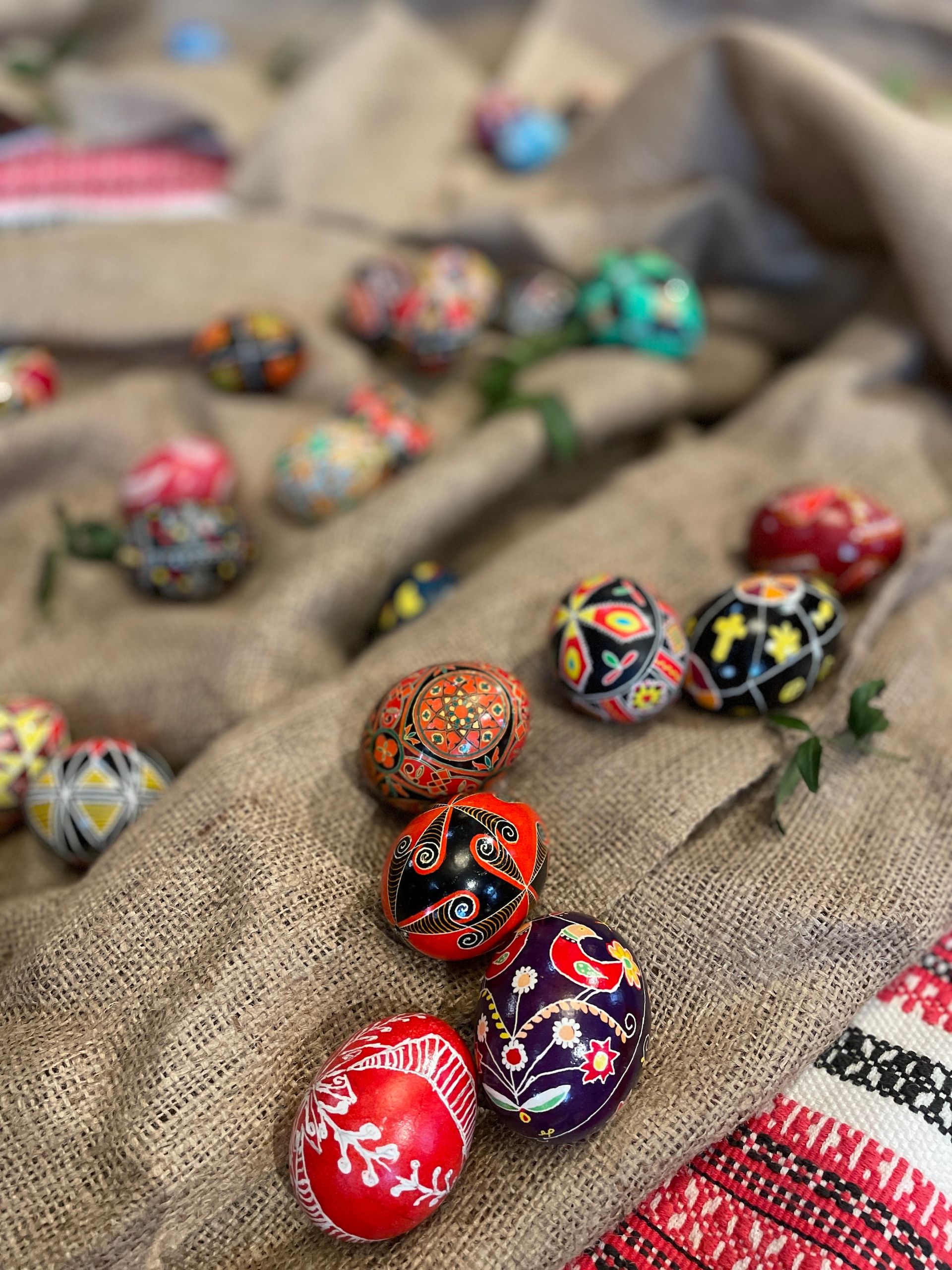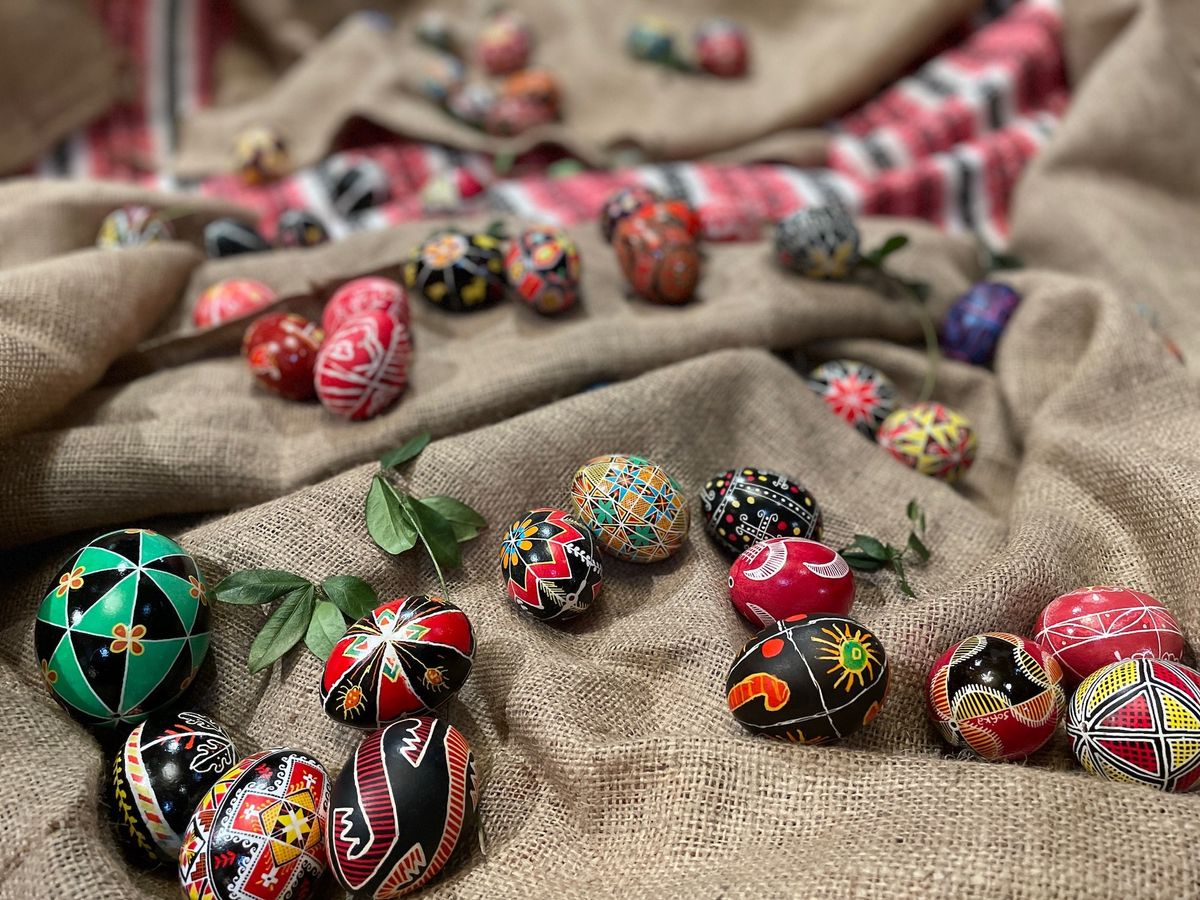Like many people of Ukrainian heritage living overseas, the New York-based artist Sofika Zielyk was shocked when Russia invaded Ukraine on 24 February and unsure where to direct her energies. Then she hatched a plan.
“I went through the stages of grief,” Zielyk says of the war’s early days. “In the beginning it was just shock and disbelief, then sadness—the kind of sadness that actually hurt—and then rage. And during that rage I had to do something. Short of taking a bazooka and going to Kyiv, which I can’t do, I needed to do something. Then I realised that the egg is my weapon.”
Zielyk is an extremely accomplished creator of pysanky, eggs with ornately batiked shells that are a form of Ukrainian folk art that has been practised (traditionally only by women) for centuries. Though primarily associated with Easter now, pysanky have many older pagan uses as tokens of good fortune, regeneration and protection from evil.
“There is an old, old legend that says that as long as people are creating pysanky, the world will continue to exist,” Zielyk says. “It says that there’s an evil monster chained up in the hills in the Carpathian Mountains, and he’s the personification of evil. Each year, he sends spies to see if people are still making the eggs, and if they are, the spies go back and tighten the monster’s chains. But if people are not carrying on this tradition, the spies never come back, the chain become looser and looser, the monster will get free and it will be the end of the world.”
Recognising how poignant pysanky are to Ukraine’s current fight for survival, the artist launched a communal project to make and gather as many of the eggs as possible.
“I put out the word on social media for everybody who wants to—whether they're of Ukrainian background or not, whether they're five or 100, whether they're Picasso or not— to send in their traditionally designed egg,” she says. Since then, she has received eggs from all over North America and around the globe. “It’s taken on a life of its own. And for me, I can’t do much else—I go to demonstrations, I collect humanitarian aid—but this is something that makes me feel connected to my family there. I feel connected with my ancestral homeland.”
As the crowd-sourced pysanky started rolling in, Zielyk partnered with the Ukrainian Institute of America on the Upper East Side of Manhattan and the World Federation of Ukrainian Women’s Organisations (WFUWO), of which she is a cultural officer. The former is hosting an ever-growing exhibition of the pysanky that people drop off or mail in that, unless the war ends sooner, will remain on view until 24 August, Ukraine’s Independence Day.
“As the display grows and grows and grows, we know that we’re still in trouble, and yet, at the same time, there’s this really intense, visceral kind of symbolism behind this that conveys or projects a magic—these eggs are a powerful thing,” Andrew Horodysky, an advisor for art programming at the institute, asys. “That really harks back to pre-Christianity. It’s this ritual that’s been passed along generations after generations after generations. And that magic has never subsided.”

A partial view of The Pysanka: A Symbol of Hope at the Ukrainian Institute of America Photo courtesy Sofika Zielyk
After the war, WFUWO will work with women’s organisations in Ukraine to send pysanky to communities there, where they will fulfil their traditional functions as good omens to promote recovery and rebirth as the country undertakes what will be a long and difficult reconstruction process.
“They are not meant to be kept, they were used as good luck charms,” Zielyk says. “They were put in cattle feed so the cattle would be stronger, they would be buried in gardens so the harvest would be better, where the house was being built pysanky were put on each corner so the house would be free of evil spirits and so on. So these eggs will go back to Ukraine and symbolically help with the rebirth.”
- The Pysanka: A Symbol of Hope, until 24 August, Ukrainian Institute of America, New York.


